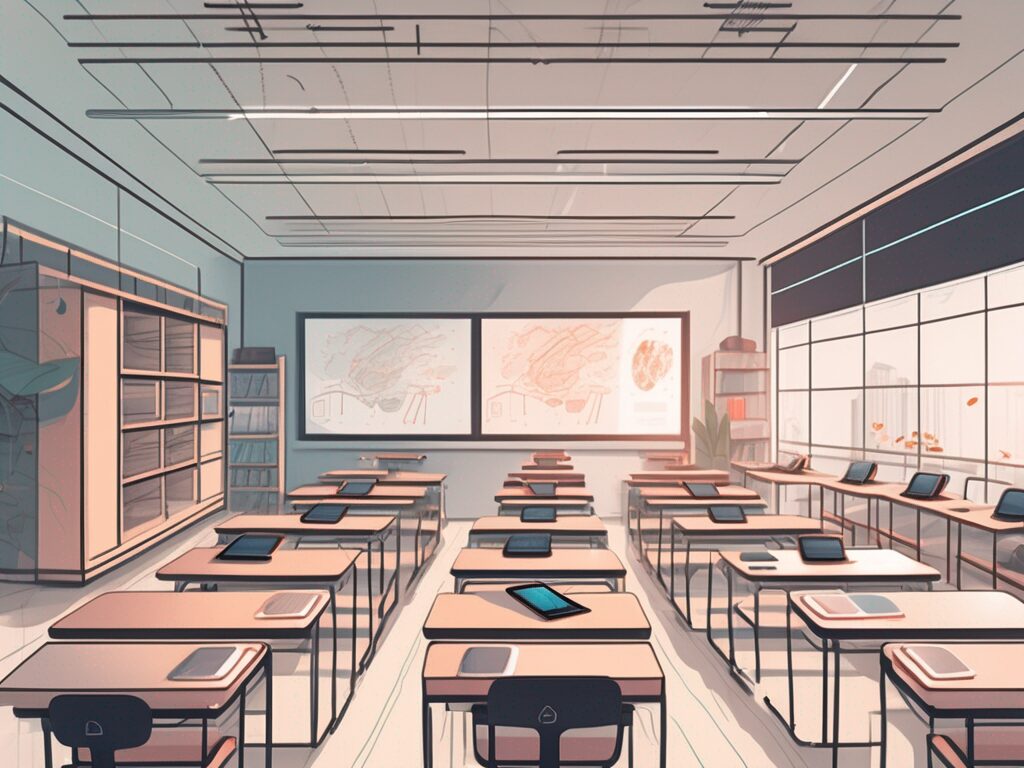In the realm of modern education, technology has become a crucial player. It’s like the new kid on the block who has all the cool toys, and everyone wants to be their friend. In China, a country known for its rapid technological advancement and commitment to education, this integration of technology in classrooms is particularly noteworthy.
The Current State of Technology in China Classrooms
Before we delve into the nitty-gritty of integrating technology, let’s take a moment to understand the current state of affairs. Imagine walking into a classroom in China. You might be surprised to find that it’s not vastly different from a classroom in the UK. There are desks, chairs, a blackboard, and a teacher at the front. But look closer, and you’ll notice the subtle differences.
Perhaps there’s a Smartboard instead of a traditional blackboard. Maybe the students are using tablets instead of textbooks. These are the signs of a classroom that’s embracing technology. But it’s not just about the physical hardware. The real magic lies in the software and the innovative teaching methods that technology enables.
How Technology is Being Integrated
Now that we’ve set the scene, let’s explore how technology is being integrated into China classrooms. It’s not as simple as just plugging in a computer and calling it a day. It’s a carefully thought-out process that involves teachers, students, and often parents too.
One of the most common ways is through the use of educational apps. These apps can be used on tablets or computers and offer a wide range of learning resources. They’re like a digital library at the students’ fingertips. They can access textbooks, practice exercises, and even interactive games that make learning fun.
Interactive Whiteboards
Another popular tool is the interactive whiteboard. This is a step up from the traditional blackboard. It allows teachers to display text, images, and videos, making lessons more engaging. It’s like having a cinema screen in the classroom. But it’s not just for show. Students can interact with the content on the board, making it a two-way learning experience.
For example, in a geography lesson, the teacher could display a map of the world. Students could then come up to the board and pinpoint different countries. It’s a far cry from simply reading about these countries in a textbook.
Virtual Reality
Virtual reality (VR) is another exciting technology that’s making its way into China classrooms. With VR, students can go on virtual field trips to places they could only dream of visiting. It’s like a magic carpet ride, but without the need for a genie.
Imagine studying the Great Wall of China and then being able to virtually walk along it. Or learning about the solar system and then taking a virtual trip to Mars. It’s an immersive learning experience that can make lessons unforgettable.
The Benefits of Integrating Technology
So, why go to all this trouble of integrating technology? Well, the benefits are manifold. For starters, it makes learning more engaging. It’s like adding a dash of spice to a meal. It enhances the flavour and makes it more enjoyable.
Technology also allows for personalised learning. With educational apps, students can learn at their own pace. They can spend more time on topics they find challenging and breeze through those they find easy. It’s like having a personal tutor, but without the hefty price tag.
Furthermore, technology can help prepare students for the digital world. We live in an era where digital literacy is as important as traditional literacy. By using technology in the classroom, students can develop these essential skills from an early age.
The Challenges of Integrating Technology
Despite the many benefits, integrating technology is not without its challenges. It’s like trying to bake a cake without a recipe. There are many ingredients to consider, and getting the balance right can be tricky.
One of the main challenges is training teachers. Not all teachers are tech-savvy, and learning to use new technology can be daunting. It’s like learning a new language. It takes time and practice.
Another challenge is the cost. Technology can be expensive, and not all schools have the budget to afford it. It’s like wanting to buy a Ferrari on a Ford budget. It’s a dream that’s not always attainable.
Conclusion
Integrating technology in China classrooms is a complex but worthwhile endeavour. It’s like embarking on a journey. There might be bumps along the way, but the destination is worth it. With the right planning, training, and resources, technology can transform the learning experience and prepare students for the digital future.
So, the next time you walk into a classroom in China, take a moment to appreciate the technology around you. It’s not just about the shiny gadgets. It’s about the innovative teaching methods and the enhanced learning opportunities they provide. It’s about preparing students for a future where technology is not just a tool, but a way of life.
Take the Next Step in Your Teaching Career with IPGCE
As you embrace the digital transformation in China’s classrooms, consider how the International Postgraduate Certificate in Education (iPGCE) can further your professional development. With the iPGCE, you’ll not only enhance your qualifications and increase your chances of securing international teaching positions, but you’ll also join a global network of educators, gain a deeper understanding of global education systems, and enjoy the flexibility of balancing work with your studies. Don’t let inadequate credentials or limited advancement opportunities hold you back. Join the UK’s #1 Teacher Training Course today and prepare for a future where technology and education go hand in hand.

